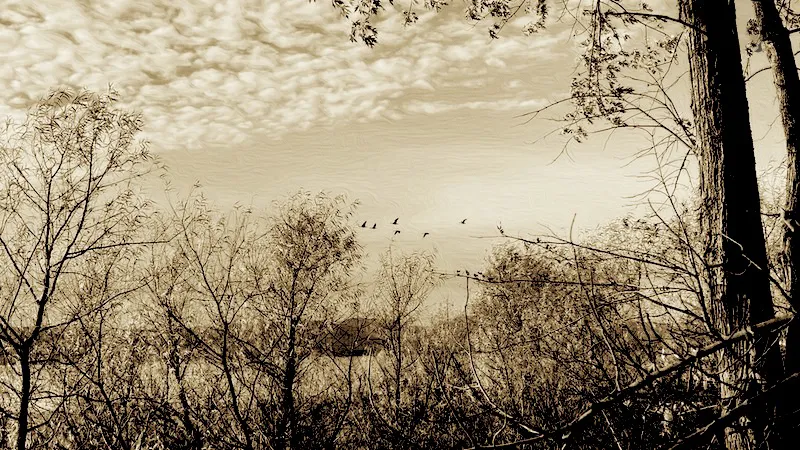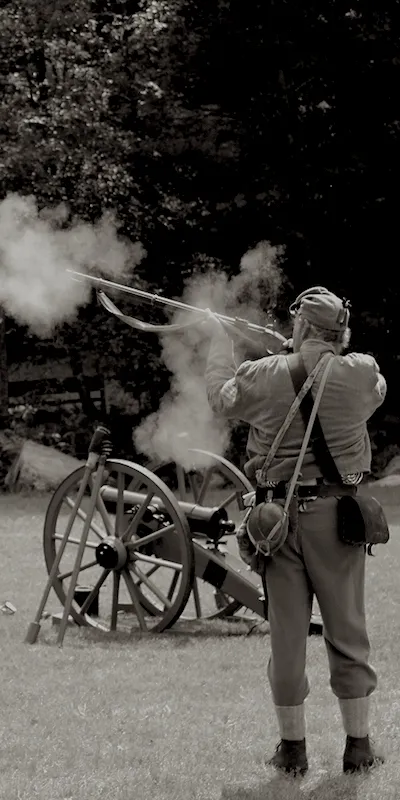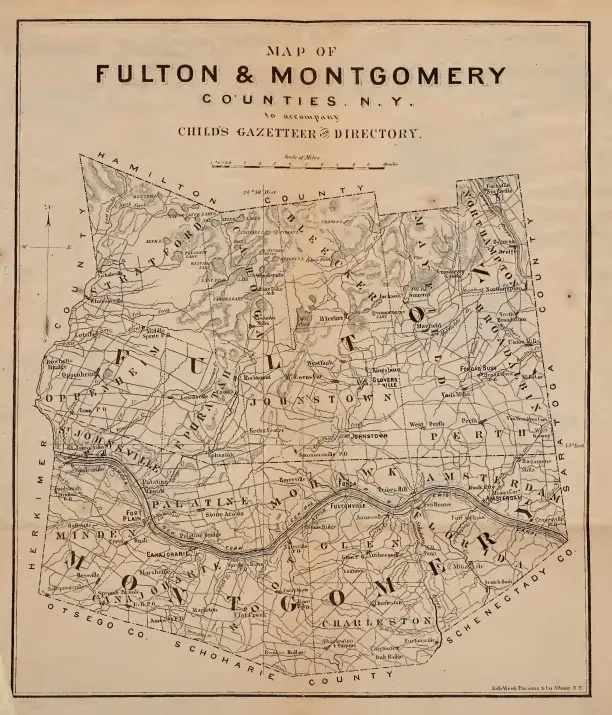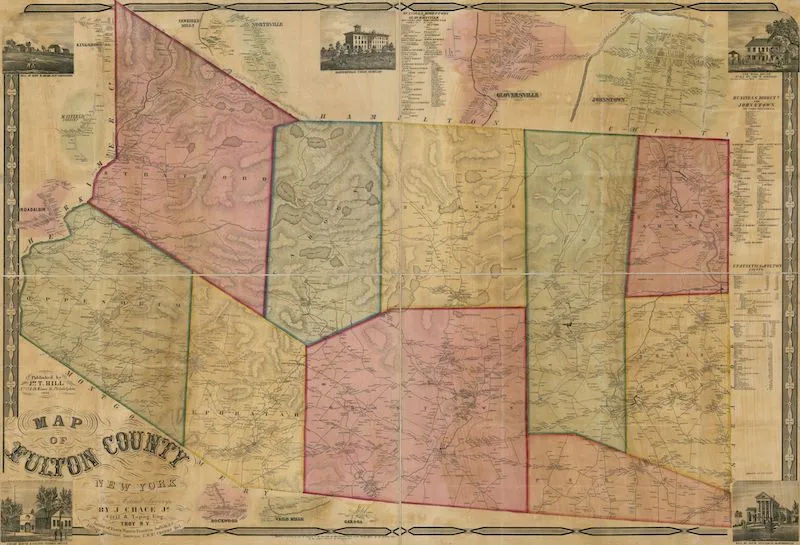Early Times and Johnson Town
In the beginning, the land, and especially the northern land, of our present Fulton County evolved from the violent upheaval of the earth in the form of lofty mountains. Then followed the extended glacial period redistributed, and beautiful valleys and riverbeds scoured out by the moving glaciers.
Then came the forest growth and the abundance of wildlife which freely roamed this area. Soon, early Native Americans entered this pristine picture and found our area to their liking for hunting and fishing grounds. Eventually, these early native tribes joined together along the fertile Mohawk Valley just to our south and formed the Iroquois Confederacy. The Mohawk Nation acted
as Confederacy and continued to rely on this northern area as a source for their food and clothing supply.
The first European influence arrived on our shores in the early 1600’s with the arrival of the Dutch who promptly named all of the area to the north New Netherlands. They soon spread their influence up the Hudson River and west along the Mohawk River until 1664 when the British took over the Dutch lands and renamed them New York after the Duke of York.
In the early 1700’s, the German Palatines started to arrive and actually became the first settlers of today’s Fulton County. They and their Dutch neighbors tilled the rich soil of the palatine region in our western regions.
Just prior to 1760, Sir William Johnson, the Crown’s Indian Agent and Baronet, started recruiting immigrants to settle the lands which he had acquired. These mostly Scottish immigrants became the nucleus of today’s city and town of Johnstown near the manor which he had built in 1762 and named Johnson Hall.
Johnson Town, later shortened to Johnstown, was named after himself and the surrounding area, flourished until 1772 at which time Johnson petitioned the provincial Assembly in Albany to have the huge Albany County, which had been formed in 1683, broken up so that Johnstown could become the county seat of a new local county and thereby have it’s own convenient courthouse, jail and local administration. Because of Sir William Johnson’s widespread influence, this was approved and our Fulton County area became a part of the still large but new Tryon County, named after the New York Colonial Governor William Tryon. A smaller Albany County remained and Charlotte County was formed in the Champlain-Vermont area.

Geese Flying South

Revolutionary War Reenactment

1869-70 business gazeteer Fulton Montgomery Map from the Library of Congress
This new Tryon County stretched from the western boundaries of the now much smaller Albany County west to the Canandaigua Treaty Line of 1768 near Rome, NY, north to the Canadian Border and south to the Pennsylvania line.
Tryon County remained so named until 1784 when the now onerous British name of Tryon was changed to Montgomery County, named after Gen. Richard Montgomery who was one of our
first heroes of the War, killed while attacking Quebec. Many of our local men served with Montgomery and knew and respected him as a leader.
The Montgomery County seat remained at Johnstown and now the county stretched all the way west of the Great Lakes.
As western migration took place, this large Montgomery County soon became sub-divided into new counties with their own county seats. Further, the operation of the new Erie Canal and the building of new roads along the river attracted new settlements to the Mohawk Valley and population growth soared in that area of the county south and southwest of Johnstown.
Because of this shift in the population center, the people in the Mohawk Valley area petitioned the N.Y. State Legislature to have the county seat of Montgomery County transferred to Fonda. This was approved in 1836.
Fulton splits from Montgomery County
This move generated a great deal of dissatisfaction in the northern part of Montgomery County and soon a petition was made to the N.Y. Legislature by a group led by Judge Daniel Cady of Johnstown to have the county divided into two counties. On April 18, 1838, this request was approved and the northern half of the divided county was named Fulton County after Robert Fulton of steamship and Erie Canal fame and Johnstown once again became a county seat. After a few internal Town boundary changes and divisions, Fulton County was formed as you see it today.
Modern day Fulton County
Today, Fulton County maintains the oldest courthouse in N.Y. State and one of the oldest in the country still being used for court proceedings. We have many interesting historic sites, led by Johnson Hall, and are rich in other early history as well.
Fulton County is also a growing mecca for tourists interested in outdoor activities such as hunting, fishing, boating, skiing, swimming, etc. Our Recreational Rail Trails is nearing completion and will soon connect with other trails throughout the Mohawk Valley. We are still proud of our rich farmlands, friendly cities and villages, industries and heritage. Fulton County has a proud past and a promising future.
William G. Loveday Jr.
Past Fulton County Historian

Fulton County Map 1856 from the Library of Congress
Historian Links

